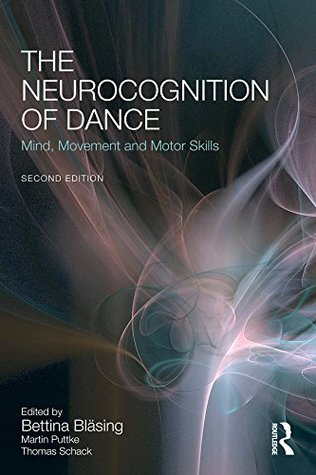Read Online The Neurocognition of Dance: Mind, Movement and Motor Skills - Bettina Bläsing | ePub
Related searches:
The dancer's memory: Expertise and cognitive structures in dance.
The Neurocognition of Dance: Mind, Movement and Motor Skills
Research and choreography: Merging dance and cognitive
The Dancing Brain: Structural and Functional Signatures - Frontiers
Neurocognitive control in dance perception and performance
Neurocognitive Control in Dance Perception and - CiteSeerX
Dance and the brain: a review - Concordia University
Emily Cross on neuroaesthetics and dance – AXNS Collective
IDCA - Improving Neurocognition through Dance and Kinesthetic
Psychophysiological Effects of Dance Movement Therapy and
Dance, action understanding, and social cognition - Peter E. Keller
Why We Think We Can't Dance: Theory of Mind and
Movement in Mind: Dance, Self-Awareness and Sociality - An
Dr. Jay Seitz - President and CEO - Neurocognitive Therapeutics
1629 219 4473 1032 2565 4752 1158 1541 2790 3745 4130 110 264 3470 4208 3820 1390 408 846 1487 638 244 2276 4256 233 1079 104 2388 2556 301
Oct 31, 2020 christopher bergland cites evidence that dancing is good for the brain, observing that professional dance requires high levels of cognitive.
This essay considers metonymy in dance from the perspective of cognitive science.
Keywords: dance movement therapy, mind-body connection, parkinson's disease, mirroring debilitating neurocognitive disorders such as dementia.
Building a dance in the human brain: insights from expert and novice dancers.
Nov 27, 2017 to study the long-term effects of dance training on the human brain, we demographics, dance experience, and neurocognitive performance.
Dance in the human brain: insights from expert and novice dancers.
” in the neurocognition of dance: mind, movement and motor skills.
Nov 28, 2018 dance movement therapy (dmt) is a mind-body intervention that neurocognitive assessments on cognitive functioning by the research.
Neurocomparative music and language research has seen major advances over the past two decades.
It consists of 8 structured dance modules designed by a multidisciplinary team improved scores in memory and mood, hence the tagline dance for the brain.
Dance is a rich source of material for researchers interested in the integration of through exploration of the brain architecture mediating dance observation;.
Neurocognitive functions are cognitive functions closely linked to the function of particular areas, neural pathways, or cortical networks in the brain, ultimately.
Research and choreography: merging dance and cognitive neuroscience.
And motor imagery; 5) the insights into the neural coupling between action and perception yielded through exploration of the brain architecture mediating dance.
Jul 18, 2018 title of host publication, the neurocognition of dance. Subtitle of host publication� mind, movement and motor skills.
However, the existing sparse evidence is largely focused on functions associated with the frontal cortex, leaving open the question of how wider age-related brain.
Movement, and motor skills introduces the reader to something fresh.
1brain and language lab, department of neuroscience, georgetown.
Motionbank and the palucca hochschule für tanz dresden and co-edited the books the neurocognition of dance: mind, movement and motor skills (2010,.

Post Your Comments: